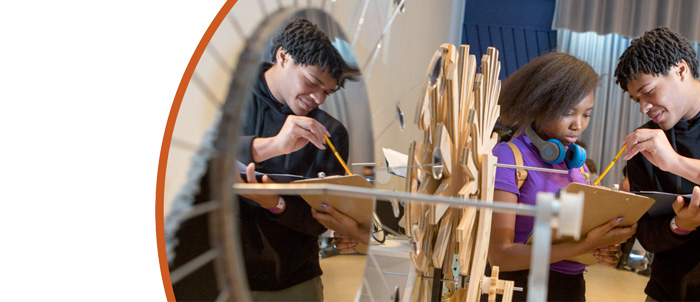Engaging students in discourse about criteria for judging scientific models
Effective Years: 2023-2026
The goal of this project is to study how secondary students come to understand better an underlying logic of natural sciences--the relation between construction of new ideas and critique of them. Science education has traditionally focused mostly on how students construct models of natural phenomena. However, critique is crucial for iterative refinement of models because in professional science, peer critique of explanatory models motivates and guides progress toward better understanding. This project engages students in this process and helps them understand the relation of critique to better explanations, by focusing students on the criteria by which critique and understanding develop together through classroom discussions. The team is developing a suite of teaching tools expanding upon the previously developed open source software, Modeling and Evidence Mapping Environment, which structures how students connect evidence directly to models they construct. The products of this project, which include enhanced software, curriculum, and assessments, are intended to increase capacity to engage young learners in ambitious science educational experiences that are consistent with the Next Generation Science Standards.
The project focuses on three interlinked practices critical for successful reasoning with evidence about scientific models in science: engaging in peer critique of models, describing and justifying key epistemic considerations to guide model critique, and iteratively revising models towards greater accuracy by attending to peer critique. This project advances the existing Model and Evidence Mapping Environment software by adding a scaffolding suite to support student engagement in, and valuing of, this epistemic meta-level of community critique for improving the veracity and utility of models. A set of design experiments provide insights regarding teachers' effective scaffolding of activities and software features, and inform iterative design of instructional materials. The entire ensemble is tested in small and larger scale heterogeneous classroom settings in Indiana and New Jersey. Measured outcomes include student learning, based on interviews and written student artifacts, as well as examinations of classroom collaborative discourse. The project is yielding critical theoretical insights about learners' growth along these dimensions of understanding science, and practical materials and professional development to support it.
This project is supported by NSF's EDU Core Research (ECR) program. The ECR program emphasizes fundamental STEM education research that generates foundational knowledge in the field. Investments are made in critical areas that are essential, broad and enduring: STEM learning and STEM learning environments, broadening participation in STEM, and STEM workforce development.
The project is also supported by the Discovery Research preK-12 program (DRK-12), which seeks to significantly enhance the learning and teaching of science, technology, engineering and mathematics (STEM) by preK-12 students and teachers, through research and development of innovative resources, models and tools. Projects in the DRK-12 program build on fundamental research in STEM education and prior research and development efforts that provide theoretical and empirical justification for proposed projects.
This award reflects NSF's statutory mission and has been deemed worthy of support through evaluation using the Foundation's intellectual merit and broader impacts review criteria.




